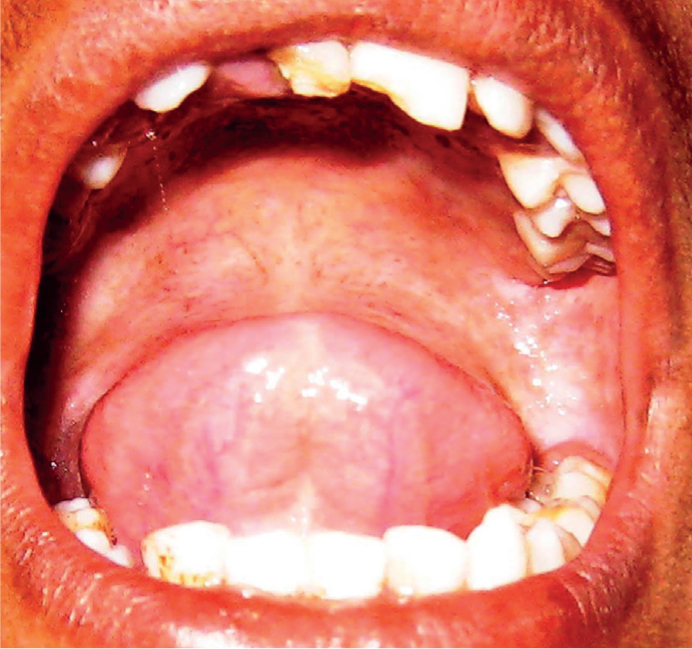Article
Banish the bane or face the ghastly consequences: an unusual report on oral submucous fibrosis
Oral submucous fibrosis is a disease predominantly limited to the Asian countries, especially the Indian subcontinent. However, with an ever increasing Asian population in the UK, this disease has contemporary relevance and dentists should be aware of the factors which can predispose to it, even at an early age.
There are only a few reported cases of oral submucous fibrosis in children. A 12-year-old boy presented with complaints of restricted mouth opening and burning sensation in the oral cavity for 6 months. He reported of chewing about 10 packets of gutkha for 6 years. A conspicuous blanched appearance of labial and buccal mucosae and hard palate was observed (Figure 1).

Tongue movements were reasonably restricted and the patient was unable to bring the tip of the tongue in contact with the hard palate (Figure 2). Dense, fibrotic bands were palpable in the buccal mucosa and the anterior fauces. A diagnosis of oral submucous fibrosis was made based on these features.

The patient was working as a domestic help in a suburban middle class household and he reported only because his employer had also visited the dental clinic for a check-up. He had only completed his schooling up to first grade when he was abandoned by his parents due to extreme penury. He developed the habit of gutkha chewing as it provided a euphoric perception and also satiated the appetite at little cost. It has been suggested that the interplay between such complex socio-economic factors in the South East Asian region increases the probability of addiction to gutkha chewing in the pre-teen years.1 To compound matters, illiteracy doesn't help as the mandatory statutory warning imprinted on the gutkha packets remains unread by many. The authors feel that a detailed study to ascertain the prevalence of oral submucous fibrosis in the children of lower socio-economic groups must be undertaken in a country like India where poverty, illiteracy and child labour act together to enhance the vulnerability of the young. The gutkha industry in India is worth billions of rupees so the situation is unlikely to change unless this hazard can be reined in somehow. However, if prompt remedial measures are not taken, the day is not far off when cases like the present one become the norm rather than the exception.
